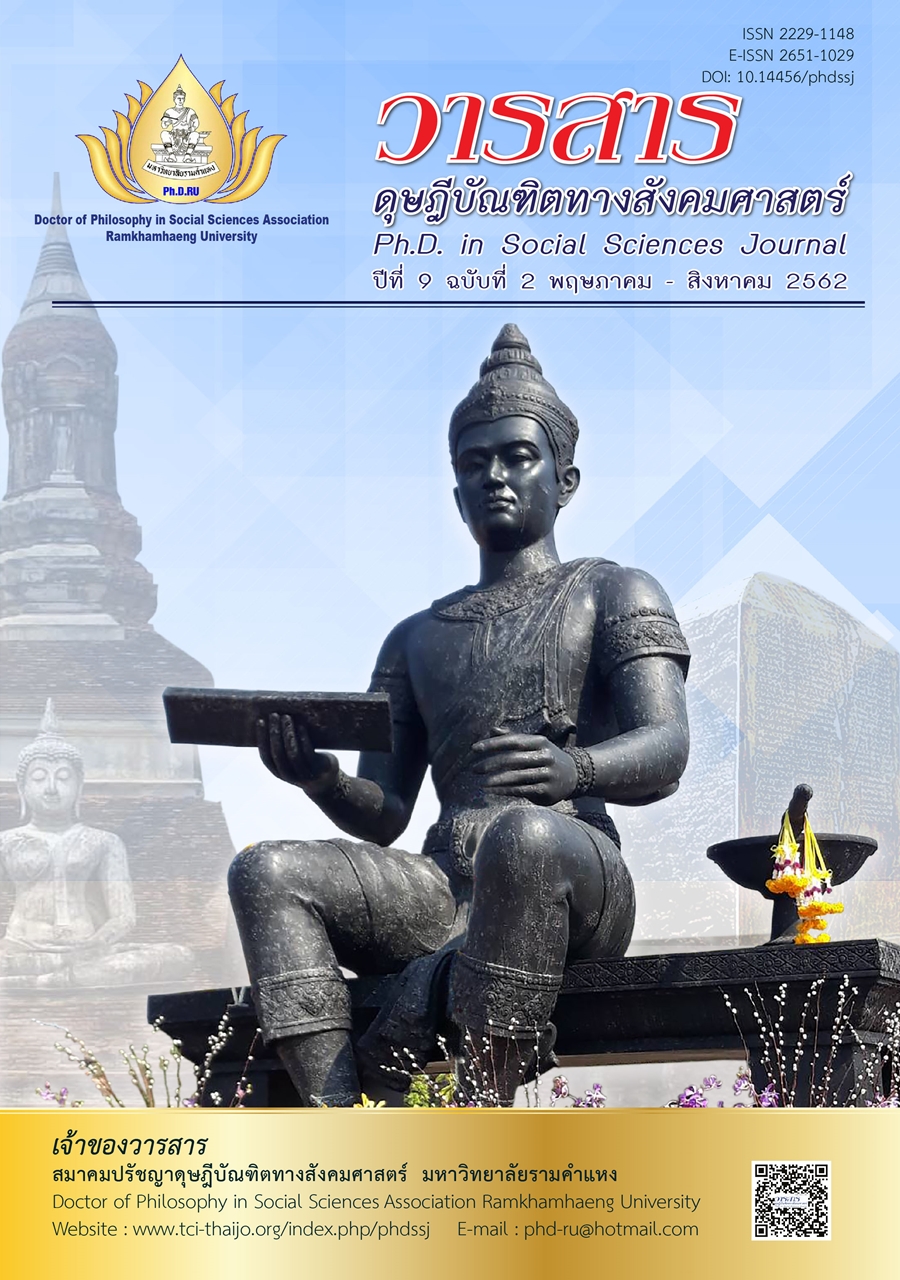Influential Factors in Causal Model for Professional Achievement of Certified Public Accountants in Thailand
Main Article Content
Abstract
This research aims to (1) to study on influential factors in causal model for professional achievement of certified public accountants in Thailand; (2) to examine the relationship of causal model for professional achievement of certified public accountants in Thailand with empirical data (3) to study the size of direct, indirect, and total influences towards professional achievement of certified public accountants in Thailand (4) To apply the finding from Influential factors in causal model for professional achievement of certified public accountants in Thailand to be used as a guideline to develop and to enhance of professional competence for the successful completion of the auditor’s profession. The data was collected from 400 certified public accountants in Thailand and analyzed by the Structural Equation Model (SEM).
The results found that personal environmental factors, professional competence and professional commitment, the success of the audit profession can be ranged from the highest on Professional commitment variables, professional competence, and personal environment factors respectively. The finding after package program processing found that the consistency of the structural equation model of Chi-square criteria were 94.327, df = 84, p-value = 0.207, GFI = 0.938, CFI = 0.992, AGFI = 0.911, RMR = 0.030, RMSEA = 0.026. The results of this analysis are consistent with the empirical data and path analysis found that personal environment factors, professional capacity factor and professional commitment factor influence to direct positive influence on auditors’ professional achievement at statistically significant. The interview with semi-structured questions from the authorized auditors and experts. It can be concluded that the model can be used as a guideline to develop the auditor’s professional success in Thailand.
Article Details
Academic articles, research articles, and book reviews in the Ph.D. in Social Sciences Journal are author’s opinions, and not the publisher’s, and is not the responsibility of the Ph.D. in Social Sciences Journal Philosophy Association, Ramkhamhaeng University. (In the case that research is done on human, the researcher has to be trained in Ethics for Doing Research on Human Training and has to produce the evidence of the training).
References
Bonner, S. E. (1997). Accounting, audit category knowledge as a precondition to learning from experience. Organizations and Society, 22(5), 387-410
Colquitt, J. A., Conlon, D. E., Wesson, M. J., Porter, C. O. L. H., & Ng, K. Y. (2001). Justice at the millennium: A meta-analytic review of 25 years of organizational justice research. Journal of Applied Psychology, 86(3), 425-445.
Creswell, J. W. (2003). Research design: Qualitative, quantitative, and mixed methods approaches (2nd ed.). Thousand Oaks, CA: Sage.
Gaivong, S. (2010). Factors affecting the professional skills of certified public accountants and tax auditors. Bangkok: Pacific Institute of Management Science, 4(1), 51-68. [In Thai]
Federation of Accounting Professions. (2011). Accounting standards, Issue 18, Income. Retrieved from https://www.fap.or.th [In Thai]
Hair, J. F., Tatham, R. L., Anderson, R. E., & Black, W. (1998). Multivariate data analysis (5th ed.). London: Prentice Hall.
Henchokchaichana, N. (2005). Auditing. Bangkok : T. P. N. Place. [In Thai]
Kaiyaphan, P., & Hemmant, N. (2014). Thai accountant for ASEAN Economic Community. WMS Journal of Management Walailak University, 3(3), 14-21. [In Thai]
Kennedy, M. (2005). An integrative investigation of person-vocation fit, person organization fit, and person-job fit perceptions. Dissertation, Ph. D. (Philosophy). Denton: Graduate School The University of North Texas at Denton. Photocopied.
Krootboonyong, C. (2014). Desirable characteristics of accountant for Japanese manufacturing companies in Thailand. Panyapiwat Journal, 6(1), 77-85. [In Thai]
Naami, A. (2011). Relationship between person-environment fit and job engagement in nurses of Ahvaz Hospitals. International Journal of Psychology, 5(1), 119-134.
Phillips, J. M., & Gully, S. M. (2012). Organizational behavior: Tools for success. New York: South-Western, Cengage Learning.
Rich, B. L., Lepine, J. A., & Crawford, E. R. (2010). Job engagement: Antecedents and effects on job performance. Academy of Management Journal, 53(3), 617-635.
Rogelberg, S. G. (2007). Encyclopedia of industrial and organizational psychology. Thousand Oaks, CA: Sage.
Saks, A. M. (2006). Antecedents and consequences of employee engagement. Journal of Managerial Psychology, 21(7), 600-619.
Schaufeli, W. B., Salanova, M., Gonzalez-Roma, V., & Bakker, A. B. (2002). The measurement of engagement and burnout: A two-sample confirmatory factor analytic approach. Journal of Happiness Studies, 3(1), 71-92.
Schumacker, E. R., & Lomax, G. R. (1996). A beginner’s guide to structural equation modeling. Mahwah, NJ: Erlbaum.
Srijunpetch, S. (2002). Definition and scope of accounting. Journal of Accounting Profession, 12(34), 12-19. [In Thai]
Uachanachit, D., Ussahawanitchakit, P., & Pratoom, K. (2012). Audit competency and audit survival of CPAs in Thailand: An empirical investigation of the antecedents and consequences. Review of Business Research, 12(3), 105-132. [In Thai]
Vogel, R. M., & Feldman, D. C. (2009, August). Integrating the levels of person environment fit: The roles of vocational fit and group fit. Journal of Vocational Behavior, 75(1), 68-81.
Watts, R. L., & Zimmerman, J. L. (1983). Agency problems, auditing, and the theory of the firm: Some evidence. Journal of Law and Economics, 26(3), 613-633.


